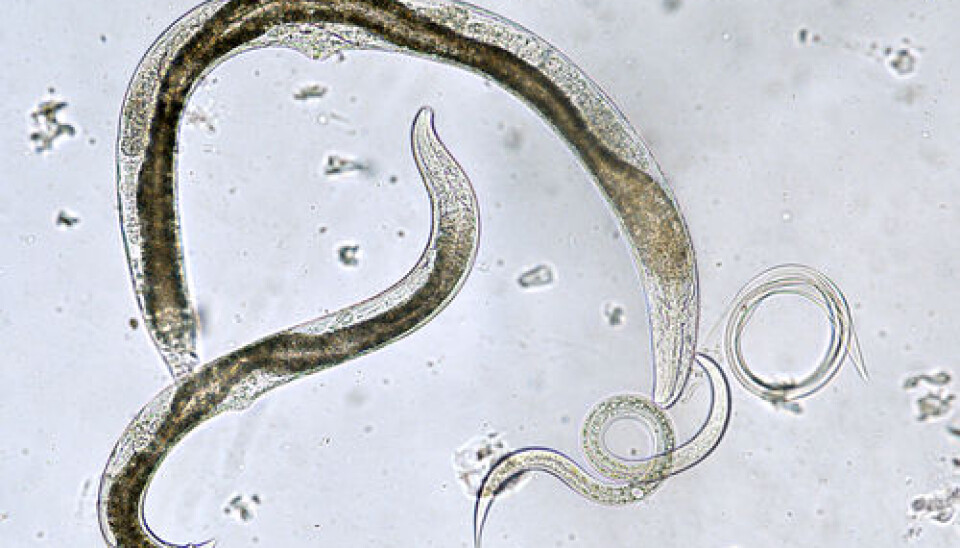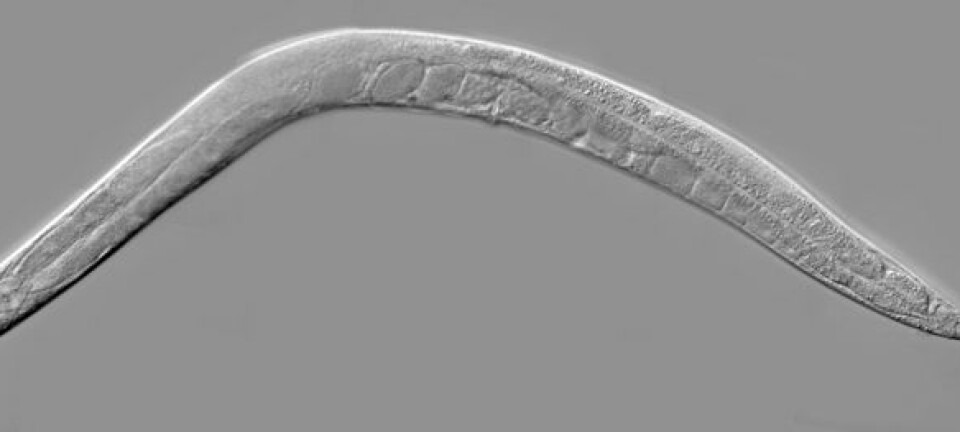
Dead parasites in your sushi can trigger allergic reaction
Eating raw fish containing tiny dead roundworms can cause an allergic reaction and at worst send your body into shock.
If you eat a piece of sushi containing a dead Anisakis, a parasitic roundworm (nematode), you risk getting a serious allergic reaction if you have previously been infected by live Anisakis.
This is the surprising conclusion of a major EU research project whose purpose is to examine the parasitic worm’s effects on consumer health and safety.
"Spanish studies show that people previously infected by a live nematode who eat raw fish containing Anisakis can develop hypersensitive reactions. This applies even when the fish has been frozen and the nematodes are dead," says Professor Kurt Buchmann from the University of Copenhagen, who is attached to the research project.
Dead parasites cause allergic reaction
While alive, the Anisakis produces certain allergy-causing substances which don’t disappear after the nematode is killed by freezing.
"We know that the Anisakis nematode produces 12 different substances which provoke allergies. Some of these substances enable it to penetrate the flesh of a fish, while others hinder certain aspects of the immune system's functionality," says Buchmann.
So even though the fish have been frozen and the nematodes are no longer alive, these substances will still be present in the fish and thus pose a risk to humans.
Professor Christian Kapel, a zoologist and a researcher at University of Copenhagen, emphasises that this only applies to people who have had previous contact with the allergy-provoking substances.
"It’s correct that there are several reports of people getting allergic reactions even from dead parasites in raw or marinated fish. But as far as we know, this only applies to people who’ve been infected previously," he says.
Nettle rash and blisters from parasites in sushi
Kapel explains that patients previously infected by the parasite develop hypersensitivity to the nematode's antigens, which means that their body reacts the instant it detects their presence.
Typical symptoms include nettle fever (urticaria), reddening, and blistering of the skin. Other experience air passage problems and an allergic reaction may cause pain and stomach/intestinal discomfort.
In extremely rare cases, the body will go into shock.
To avoid getting infected and subsequently developing an allergic reaction you should always check that the fish you are served has been frozen.
"Freezing is still a pretty good precaution against infection by a living parasite and thus avoiding the risk of developing hypersensitivity to the parasite," says Kapel.
You should always call a doctor if you experience one of the above-mentioned symptoms shortly after eating raw fish. The doctor will usually identify the symptoms by taking a blood sample to reveal the antibodies in your body.
---------------
Read the original story in Danish on Videnskab.dk
Translated by: Hugh Matthews
Scientific links
- Nematode infections of maricultured and wild fishes in Danish waters: A comparative study, doi: 10.1016, 16/12/2009
- Parasite infections of rainbow trout (Oncorhynchus mykiss) from Danish mariculture, doi: 10.1016/j.aquaculture.2014.08.041, 20/10/2014
- Occurrence of zoonotic nematodes Pseudoterranova decipiens, Contracaecum osculatum and Anisakis simplex in cod (Gadus morhua) from the Baltic Sea, doi: 10.1016/j.vetpar.2014.08.027, 15/10/14










